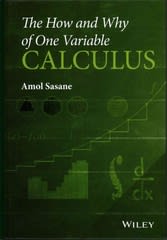Hi! Please check these answers to the questions.
(1) A radioactive mass emits particles at an average rate of 15 particles per minute. Observe the number of particles emitted in a 10minute time frame. Then the probability model is discrete. A. True B. False (2) A radioactive mass emits particles at an average rate of 15 particles per minute. A particle is emitted at noon today. Observe the time elapsed between noon and the next emission. Then the probability model is discrete. A. True B. False (3) I select two cards from a. standard deck of 52 cards and observe the color of each (26 cards in the deck are red and 26 are black). Which of the following is an appropriate sample space S for the possible outcomes? A. S 2 {red, black} S 2 {(red, red), (red, black), (black, red), (black, black)} S = {0, 1,2} S: {1,2,...,13} S = {spade, club, heart, diamond} P155093 (4) Choose an American household at random. Let X be the number of cars the residents own. The table gives the probability model. X 0 1 2 3 4 5 6 7 more Probability 0.087 0.323 0.353 0.144 0.053 0.019 0.007 0.002 0.002 Assume all housll have twocar garages. What percent of households have more cars than the garage can hold? A. 14.4 913 B. 22.7% C. 41.0% D. 59.0% (5) The probability of event A is P(A) = 0.3, and the probability of event B is P(B} = 0.25. Are A and B disjoint? A. Yes. B. No. C. It is impossible to determine from the information given. (6) The probability of event A is P(A) = 0.7, and the probability of event 3 is 13(3) 2 0.5. Are A and B disjoint? A. Yes. 13. No. C. It is impossible to determine from the information given. (7) A student is chosen at random from a statistics class. Which of the following events are disjoint? A. Event A is that the student is a junior. Event B is that the student is a senior. 13. Event A is that the student is a psychology major. Event B is that the student is a statistics major. C. Event A is that the student is at least 5'3" tall. Event B is that the student weighs at least 160 pounds. D. Event A is that the student lives in a dorm. Event B is that the student is an athlete. (8) Choose an American adult at random. The probability that you choose a woman is 0.54. The probability that the person you choose has never married is 0.28. The probability that you choose a woman who has never married is 0.11. The probability that the person you choose is either a woman or never married (or both) is A. 0.71 B. 0.15 C. 0.82 D. 0.39 (9) In a town, 30% of the households own a dog, 20% own a cat, and 10% own both a dog and a cat. If we select a household at random, the chance that they own a dog or a cat but not both is: A. 30 % B. 40 % C. 50% D. 60% (10') You throw a die until observe a 6. Observe the number of throwing and denote it as X. Then P(X = k) = (Elk1G) k =1,2,... 1 wee passes What is the probabiJity that X Z 3'? A. 0.167 B. 0.833 C. 0.694 D. 0.306 That is, P(X=1)=








